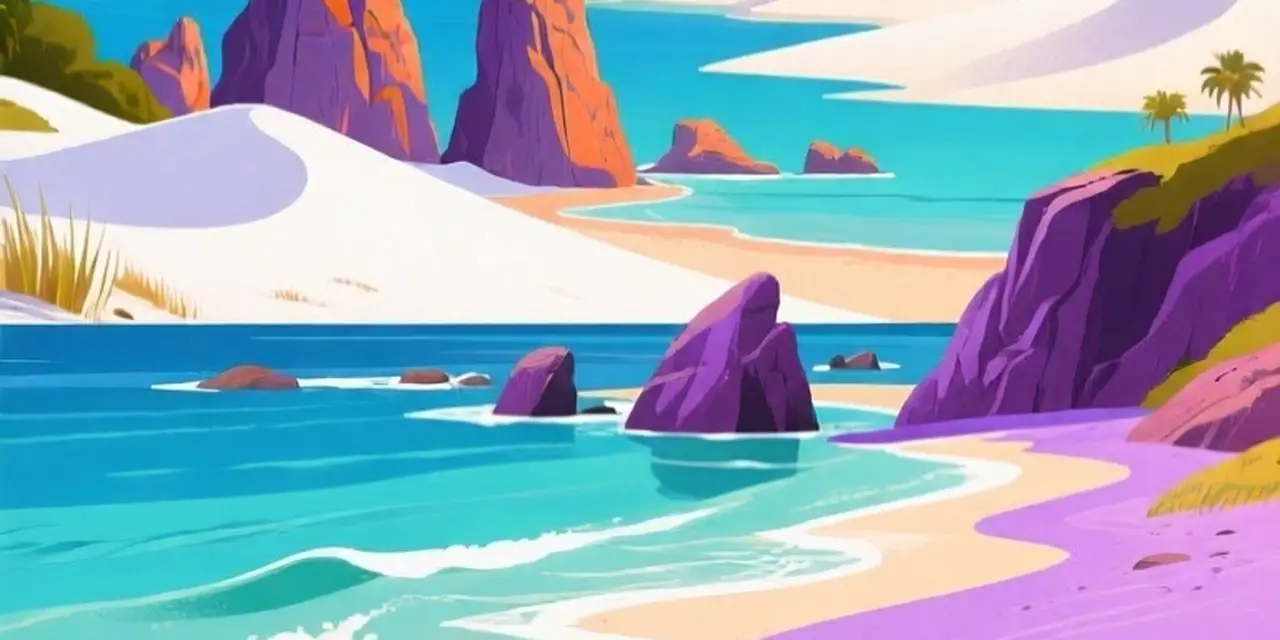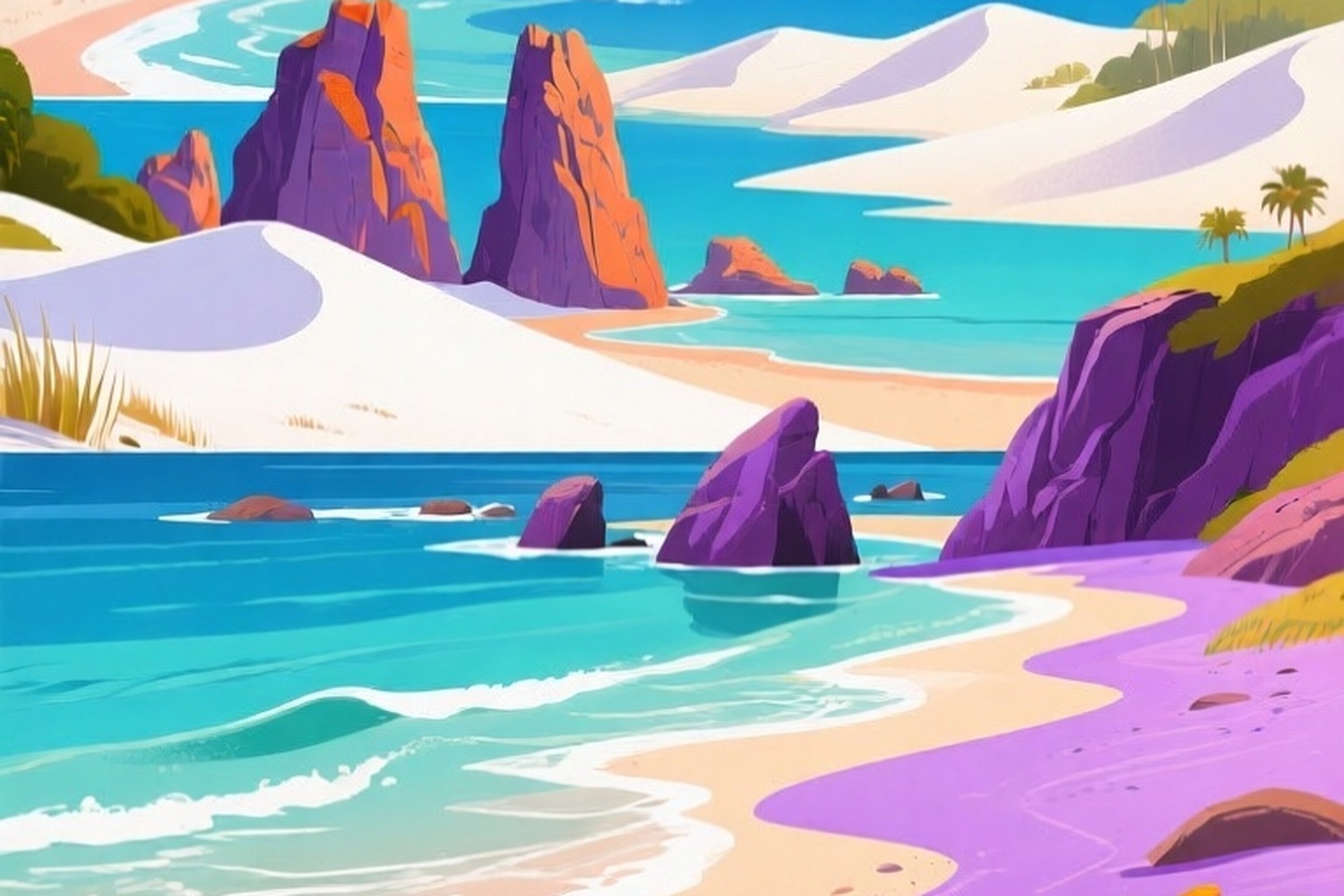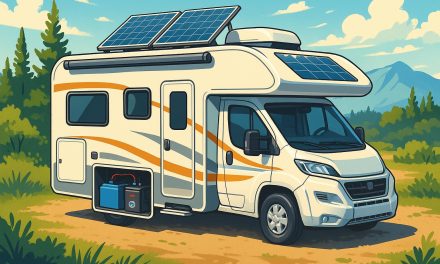Would you like to save this article?
You think you know beaches? Think again. America’s coastline stretches over 95,000 miles, and tucked away in this vast expanse are beaches so bizarre and beautiful that they’ll completely shatter your expectations of what a shoreline should look like. From rainbow-colored glass pebbles to neon purple sand that looks like it belongs on an alien planet, these natural wonders prove that Mother Nature has quite the sense of humor.
As an RV enthusiast, you’ve probably rolled past countless “ordinary” beaches with their predictable white sand and blue water combo. But what if we told you there are beaches where wild horses gallop freely, where the sand stays cool even in desert heat, and where you can literally walk on billions of tiny gemstones?
These aren’t fantasy locations from a sci-fi movie – they’re real destinations scattered across America, just waiting for you to park your RV and explore their otherworldly beauty.
10. Glass Beach, Fort Bragg, California
Welcome to nature’s most spectacular recycling project. Glass Beach isn’t your typical sandy shoreline – it’s a 38-acre wonderland where millions of sea glass pieces create a sparkling rainbow carpet along the Pacific Coast. This former dump site has been transformed by decades of ocean waves into what locals call “mermaid tears.”
| Glass Beach Facts | Details |
|---|---|
| Daily Visitors (Summer) | 1,000-1,200 tourists |
| Park Protection | Part of MacKerricher State Park since 2002 |
| Glass Colors Found | Over 12 different hues |
| Formation Time | 30+ years of wave action |
You’ll walk on glass and love every crunching step. The Pacific Ocean spent decades polishing discarded bottles, jars, and car parts into smooth, frosted gems that look like nature’s own jewelry box exploded across the beach. The most common colors you’ll spot are kelly green, brown, and clear white, but lucky visitors sometimes discover rare red, orange, or cobalt blue pieces.
Your Reality Check: Don’t even think about pocketing these glass treasures! It’s strictly prohibited, and frankly, you’d be stealing from one of the world’s most incredible natural art installations. Just admire, photograph, and let the next RV traveler experience the same magic.
Sources: California State Parks, Visit Fort Bragg
9. El Matador State Beach, Malibu, California
Dramatic doesn’t even begin to describe this Pacific Coast masterpiece. El Matador looks like a movie set where ancient titans played with boulders, creating towering rock formations and secret caves that would make pirates jealous. The beach stretches for three miles of pure Instagram gold.
| El Matador Statistics | Numbers |
|---|---|
| Rock Formation Age | Millions of years |
| Tide Pool Species | 200+ marine organisms |
| Peak Visitor Season | April-October |
| Parking Spots | Limited (arrive early!) |
You’re looking at natural architecture that puts human engineering to shame. The Pacific Ocean carved these massive sandstone formations over millennia, creating tunnels, arches, and hidden grottos that reveal themselves only at low tide. Professional photographers drive from hundreds of miles away just to capture the golden hour light bouncing off these geological masterpieces.
Your Adventure Advisory: Those parking spots disappear faster than ice cream on hot asphalt. Roll up in your RV before 9 AM, or prepare to circle like a hungry vulture waiting for someone to leave. The early bird gets the perfect sunset spot!
Sources: California State Parks, Visit Malibu
8. Pfeiffer Beach, Big Sur, California
Prepare your eyes for purple sand – yes, you read that correctly. Pfeiffer Beach serves up a shoreline that looks like someone mixed crushed amethysts with regular beach sand. This isn’t some tourist gimmick; it’s legitimate geological wizardry courtesy of manganese garnet erosion from the nearby hills.
| Purple Sand Facts | Details |
|---|---|
| Garnet Mineral Source | Manganese garnet from coastal mountains |
| Purple Concentration | Highest after winter storms |
| Beach Access | Single winding road (Sycamore Canyon Rd) |
| Natural Arch | Famous keyhole rock formation |
You’re witnessing millions of years of mountain erosion concentrated into one spectacular beach. When it rains, the purple manganese garnet particles wash down from the Santa Lucia Mountains, mixing with the sand to create patches of vivid purple that shift and change with each tide. The concentration is so intense in some spots that you’ll think someone spilled grape Kool-Aid in the sand.
Your Color Commentary: The purple intensity fluctuates like a mood ring. Visit after a good rainstorm for maximum purple impact, or come during dry periods for subtle lavender hints. Either way, you’re getting a beach experience that’s literally one in a million.
Sources: Big Sur California, Secret Los Angeles
7. Padre Island National Seashore, Texas
This isn’t just a beach – it’s a 113-mile-long natural fortress protecting one of America’s most unique ecosystems. Padre Island National Seashore is the longest stretch of undeveloped barrier island in the world, where massive sand dunes create an otherworldly landscape that feels more like the Sahara Desert than the Texas coast.
| Padre Island Stats | Impressive Numbers |
|---|---|
| Total Length | 113 miles |
| Dune Height | Up to 50+ feet |
| Protected Species | 380+ bird species |
| Sea Turtle Nests | 200+ annually |
You’re standing on a living, breathing sand system that migrates and shifts like a slow-motion avalanche. These aren’t your typical beach dunes – they’re massive sand mountains that can swallow entire RVs if you’re not careful. The observation tower offers 360-degree views of an ecosystem so pristine that it looks untouched by human civilization.
Your Dune Reality: Those sand mountains are constantly moving. What looks like solid ground today might be a completely different landscape next month. It’s like camping on a giant, slow-motion treadmill made of sand!
Sources: National Park Service, Texas Parks & Wildlife
6. Ruby Beach, Olympic National Park, Washington
Ruby Beach delivers raw Pacific Northwest drama in concentrated doses. This isn’t a beach for delicate sunbathers – it’s a battlefield where massive Pacific storms have been hurling house-sized logs and carving towering sea stacks for thousands of years. The result? Pure, unadulterated geological theater.
| Ruby Beach Features | Wild Statistics |
|---|---|
| Sea Stack Count | 7+ major formations |
| Driftwood Size | Logs up to 100+ feet long |
| Tide Range | 12+ feet difference |
| Storm Season | October-March (most dramatic) |
You’re experiencing the Pacific Ocean’s raw power in full display. Those enormous driftwood logs scattered across the beach? They’re 150-year-old trees that the ocean casually tossed around like toothpicks. The sea stacks rising from the waves are the stubborn remains of ancient headlands that refused to surrender to thousands of years of wave assault.
Your Storm Advisory: This beach changes personality faster than a teenager. Calm morning walks can turn into epic storm watching by afternoon. Those tides don’t mess around – what looks like solid ground can become waist-deep water in less than an hour!
Sources: Olympic National Park, Washington State Parks
5. Cannon Beach, Oregon
Meet Haystack Rock – a 235-foot-tall giant that makes grown adults feel like ants. This isn’t just a big rock; it’s a 15-million-year-old volcanic monument that serves as home base for 200,000 annual visitors who come to witness one of the most photographed coastal landmarks in America.
| Haystack Rock Stats | Massive Numbers |
|---|---|
| Height | 235 feet tall |
| Age | 15-17 million years |
| Annual Visitors | 200,000+ |
| Tide Pool Species | 100+ different organisms |
| Puffin Population | 30 nesting pairs (down from hundreds) |
You’re looking at a volcanic leftover that makes Mount Rushmore look like a small craft project. This basalt monolith was formed when Columbia River lava flows reached the Pacific Ocean millions of years ago. The surrounding tide pools turn into natural aquariums at low tide, hosting everything from bright orange sea stars to hermit crabs having real estate wars over shells.
Your Tidal Truth: That massive rock becomes an island fortress at high tide, cutting off access faster than you can say “trapped tourist.” Check those tide tables like your life depends on it – because your dry feet definitely do!
Sources: Cannon Beach Oregon, Friends of Haystack Rock
4. Coronado Beach, San Diego, California
Coronado Beach isn’t just beautiful – it’s scientifically perfect. This 1.5-mile stretch of powdery sand has been rated among the top 10 beaches in America consistently, and once you sink your toes into sand so fine it squeaks when you walk, you’ll understand why millions of visitors become instant converts.
| Coronado Beach Excellence | Perfect Stats |
|---|---|
| Sand Grain Size | Ultra-fine quartz crystals |
| Average Temperature | 72°F year-round |
| Water Visibility | 15+ feet clarity |
| Historic Hotel | Hotel del Coronado (1888) |
You’re walking on pulverized quartz crystals that have been perfectly sorted by Pacific currents over thousands of years. The sand is so fine that it feels more like powdered sugar than typical beach grit. The Hotel del Coronado, a Victorian masterpiece from 1888, watches over this beach like a grand dame overseeing her perfect garden.
Your Perfection Problem: This beach is so flawless that it’s almost boring compared to the wild geological adventures on this list. Sometimes perfect is the most unusual thing of all!
Sources: Visit Coronado, Hotel del Coronado
3. South Beach, Miami, Florida
South Beach transforms a simple shoreline into a living art gallery where Art Deco architecture meets turquoise Atlantic waters. This isn’t just a beach – it’s a 3-mile-long outdoor museum where every building looks like it was designed by someone who really, really loved pastel colors and geometric shapes.
| South Beach Culture | Vibrant Numbers |
|---|---|
| Art Deco Buildings | 800+ structures |
| Construction Era | 1930s-1940s |
| Annual Visitors | 15+ million |
| Beach Width | 300+ feet of sand |
You’re experiencing the world’s largest concentration of Art Deco architecture serving as your beach backdrop. Those pastel pink, mint green, and sunshine yellow buildings aren’t accidents – they’re the result of a 1980s preservation movement that transformed a deteriorating neighborhood into one of America’s most iconic destinations.
Your Scene Assessment: This beach attracts more people-watching opportunities than a reality TV casting call. You’ll see everything from fashion models having impromptu photo shoots to retired snowbirds discovering that neon green swimwear was a questionable choice.
Sources: Miami Beach, Art Deco Museum
2. Hanauma Bay, Oahu, Hawaii
Hanauma Bay is what happens when a volcanic crater decides to become a tropical aquarium. This curved bay was formed when ocean waves breached the wall of an ancient volcanic cone, creating a natural amphitheater that’s home to over 400 species of tropical fish living in crystal-clear water.
| Hanauma Bay Marine Life | Underwater Stats |
|---|---|
| Fish Species | 400+ different types |
| Annual Visitors | 1+ million |
| Water Visibility | 75+ feet |
| Coral Reef Age | Thousands of years |
| Closure Day | Mondays (restoration) |
You’re snorkeling inside a 10,000-year-old volcanic crater that nature converted into the Pacific’s most famous fish bowl. The bay’s semicircular shape creates perfect conditions for marine life, with bright yellow tangs, rainbow parrotfish, and green sea turtles treating visitors like welcome guests in their underwater neighborhood.
Your Underwater Reality: This bay is so popular that it closes every Monday just to recover from the weekend crowds. It’s like a marine theme park that needs a day off to let the fish decompress!
Sources: Hanauma Bay Nature Preserve, Hawaii State Parks
1. White Sands National Park, New Mexico
Plot twist: The most incredible “beach” in America isn’t even near an ocean. White Sands National Park is a 275-square-mile desert where 4.5 billion tons of pure gypsum crystals create sand dunes so white they glow like snow in the desert sun. This is Mother Nature showing off at maximum volume.
| White Sands Supremacy | Mind-Blowing Facts |
|---|---|
| Total Area | 275 square miles |
| Gypsum Volume | 4.5 billion tons |
| Dune Height | Up to 60 feet tall |
| Annual Visitors | 600,000+ |
| Sand Temperature | Stays cool even in 100°F+ heat |
You’re walking through the world’s largest gypsum dunefield – a landscape so surreal that NASA uses it to test Mars rover equipment. Unlike regular quartz sand that burns your feet, gypsum crystals reflect heat instead of absorbing it. You can walk barefoot on these dunes in 100-degree weather and the sand feels pleasantly cool.
Your Desert Beach Paradox: You’re getting the ultimate beach experience in the middle of a desert, 300 miles from the nearest ocean. It’s so bizarre that your brain will struggle to process what you’re seeing. Some visitors bring sleds to surf down the dunes – because why should snow have all the fun?
Sources: White Sands National Park, National Park Service Statistics
WordPress Featured Image
Meta Description
Discover 10 incredible American beaches with purple sand, sea glass shores, and volcanic craters. From California’s Glass Beach to New Mexico’s white gypsum dunes, these unique destinations will revolutionize your RV travel bucket list.
SOURCES
- Glass Beach – Fort Bragg
- California State Parks – MacKerricher
- Glass Beach Wikipedia
- Secret Los Angeles – Pfeiffer Beach
- Big Sur California
- Cannon Beach Oregon Official
- Friends of Haystack Rock
- National Park Service – White Sands
- White Sands Park Statistics
- Olympic National Park
- Visit Coronado
- Miami Beach Official
- Hanauma Bay Nature Preserve
- National Park Service – Padre Island
- RV Showoff YouTube Channel






